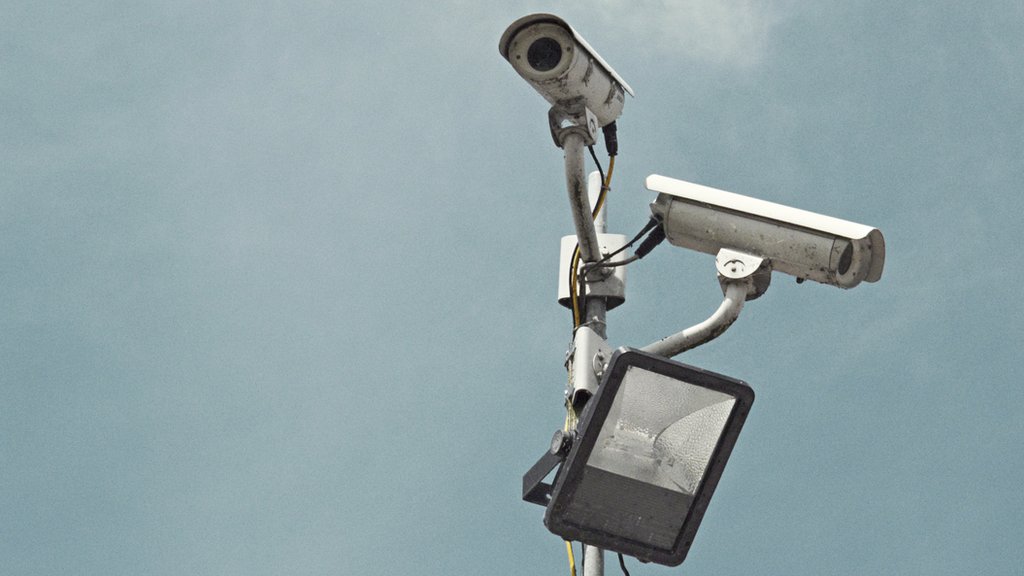The Place of work of the Privateness Commissioner of Canada (OPC) has warned that the federal government should safeguard that legislative and coverage frameworks reserve week with all of a sudden evolving surveillance applied sciences. The OPC said that the advance of unused modes of surveillance should be balanced with the will to give protection to privateness rights and civil liberties. Moreover, the OPC emphasised the utility of transparency, folk session, and the will for sunlit regulation that units out laws and procedures for the worth of such applied sciences.
An archive symbol from CCTV cameras
Tracking high-tech surveillance techniques isn’t maintaining with era, a watchdog instructed BBC Information.
Biometrics and Surveillance Cameras Commissioner Prof Fraser Sampson additionally warned of the pressing want to get up to an “explosion” of gadgets equivalent to dashcams, drones and body-worn movies.
Proposed legislative adjustments would take away a key code and oversight, he mentioned.
BBC Information has reached out to the House Place of work and the police for remark.
oversight gaps
Prof. Sampson introduced the leave of his unedited and most probably ultimate annual file.
If the Information Coverage and Virtual Knowledge Invoice turns into regulation, Prof. Sampson’s position will finish and a few of his tasks will shift to alternative regulators.
It might additionally finish the CCTV code, which governs police and native government in England and Wales, he warned.
“It’s just getting rid of what we already have,” Prof Sampson instructed BBC Information.
“In that case, those rules that we currently have will be gone, and then there’s no clear indication of what might replace them and who might be responsible for monitoring.”
There are already gaps in oversight and a necessity for extra legislation in some grounds, suggests Prof Sampson.
Retain symbol of an indication threat towards the worth of ANPR
His file highlights the worth of cameras for computerized quantity plate popularity (ANPR) and considerations about project creep.
ANPR is impaired by way of police to trace automobile actions and may be impaired to put in force low-emission zones and to ensure that vehicles are insured.
It’s “the largest non-military database in the UK,” writes Prof Sampson, “15,400 lanes covered by cameras that transmit between 70 and 80 million reads a day” – a important device whose loss would have “unimaginable” aftereffects for the police.
However he instructed BBC Information: “It has no explicit criminal foundation.
“There aren’t any ANPR regulations or statutes, if you are going to. And also, there’s no governing physique you’ll be able to flip to to invite suitable questions in regards to the extent and its incidence, about whether or not it will have to ever be expanded to incorporate number of alternative knowledge, like telephone information broadcast from a automobile , or how it’s going to trade in with the coming of automatic self sustaining automobiles.
And when it got here to free oversight and responsibility, “that’s the closest I can get – and that’s not nearly enough.”
“Uncanny Development”
Prof Sampson additionally mentioned legislation is lagging at the back of advances in biometric surveillance – are living facial popularity cameras that may fit passers-by towards a police watch listing, or synthetic intelligence (AI) techniques that may temporarily scan recordings for crowd.
Barring outstanding instances, he additionally has reservations in regards to the possible worth of facial popularity era by way of police to retrospectively establish eyewitnesses to crime.
Monitoring crowd who an set of rules says had been provide at an tournament, figuring out them from a countrywide symbol database, and “inviting” them to reveal what they’ve heard and perceivable could be “a new and somewhat sinister development,” writes Prof. Sampson.
And on the finish of a 30-minute telephone interview, he instructed BBC Information AI that AI’s skill to scan lots of biometric information from cameras and alternative resources is “not just increasing every day – it’s been increasing since we started this interview.” “.
An archive symbol of a drone
Drones taking pictures pictures of folk areas all the way through their operations, equivalent to a deliberate 164-mile “drone highway” for industrial and scientific provides, additionally carry unused questions for regulators, Prof Sampson mentioned.
He additionally mentioned police would now frequently ask for photographs or pictures that the folk could have taken themselves on their very own gadgets as a primary reaction to an important incident.
“Increasingly, the state needs images of the citizen,” mentioned Prof. Sampson, and this additionally spread out unused grounds that require legislation.
Don’t miss interesting posts on Famousbio

